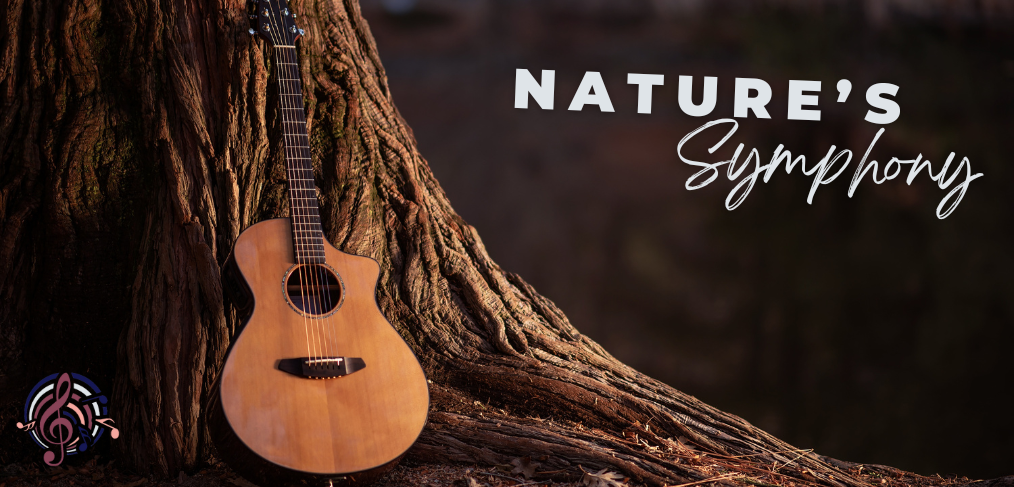
Nature’s Symphony
From the design of instruments powered by the forces of nature, to the imitation of natural sounds in instruments, to the composition of songs motivated by natural scenes; nature inspires many elements in music.
Nature is arguably the most popular musical composer. There is timbre, harmony, and rhythm to be found in rustling leaves, whispers of the wind, birdsong, cicadas, flowing rivers, babbling brooks, crashing waves, and thunderstorms. Just as elements of music can be found in nature, elements of nature can also be found in music.
Some instruments are designed to be powered from the forces of nature. For example, wind chimes respond to the natural movement of air. On the other hand, some instruments are designed to resemble specific sounds in nature – such as ocean drums and rainsticks.
Even classical instruments have the ability to mimic nature.
- String instruments like violins, cellos, and double basses can mimic the sounds of wind and waves through tremolo and glissando techniques. Raindrops can be imitated with the use of pizzicato.
- Flutes, clarinets, and oboes can imitate bird calls and other natural sounds. By using techniques like flutter-tonguing and pitch bending, woodwind players can create realistic bird and animal noises.
- Brass instruments can create powerful sounds that some would akin to thunder. By using techniques like growling and flutter-tonguing, brass players can paint a sense of natural power and force.
- Finally, various percussion instruments can be used to emulate rain, thunder, and other natural sounds. For example, a snare drum can imitate the sound of a crackling fire, while a cymbal can imitate crashing waves.
Many composers have also written pieces depicting scenes in nature:
Lever Du Jour (Daybreak) – Daphnis et Chloe by Ravel
Forest Murmurs – Siegfried Act II by Wagner
Thunderstorm – An Alpine Symphony by Strauss
In essence, music in nature is a universal language that transcends cultural and linguistic boundaries. It invites us to tune into the rhythms of the Earth, fostering a deeper connection with the environment. As we immerse ourselves in nature’s symphony, we discover that the beauty of this music lies not only in its complexity but also in its ability to evoke emotions.




